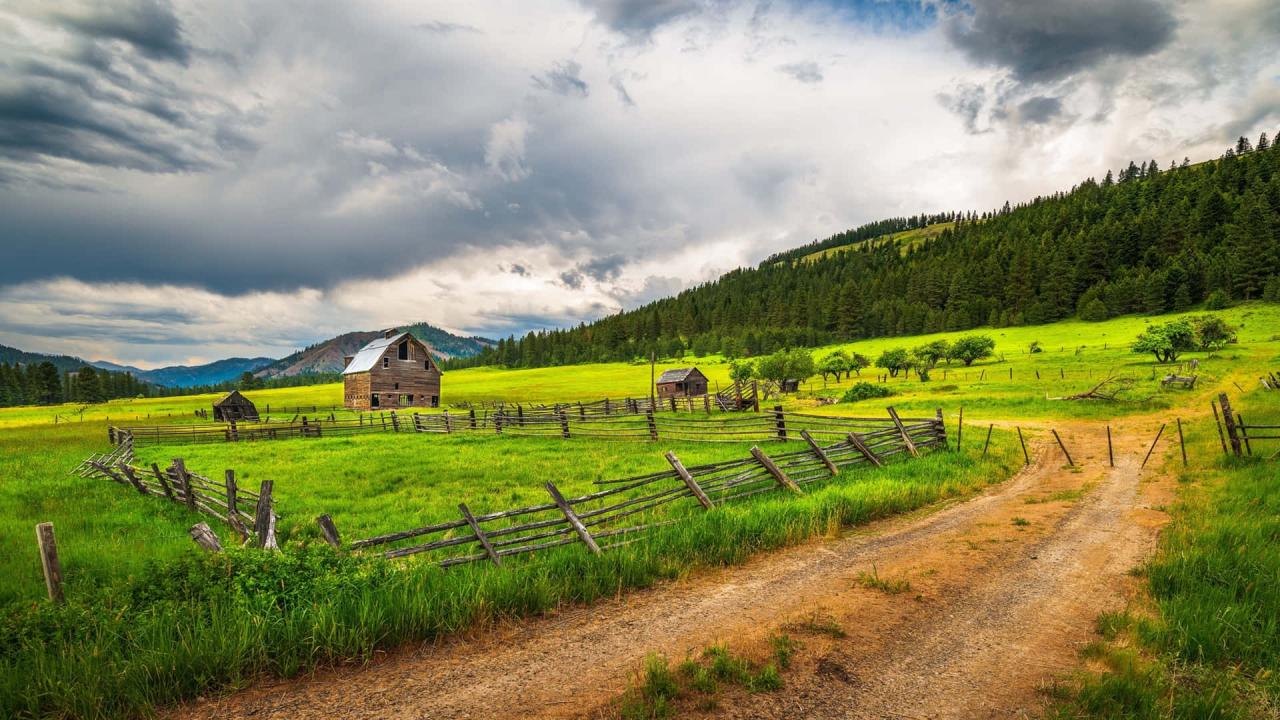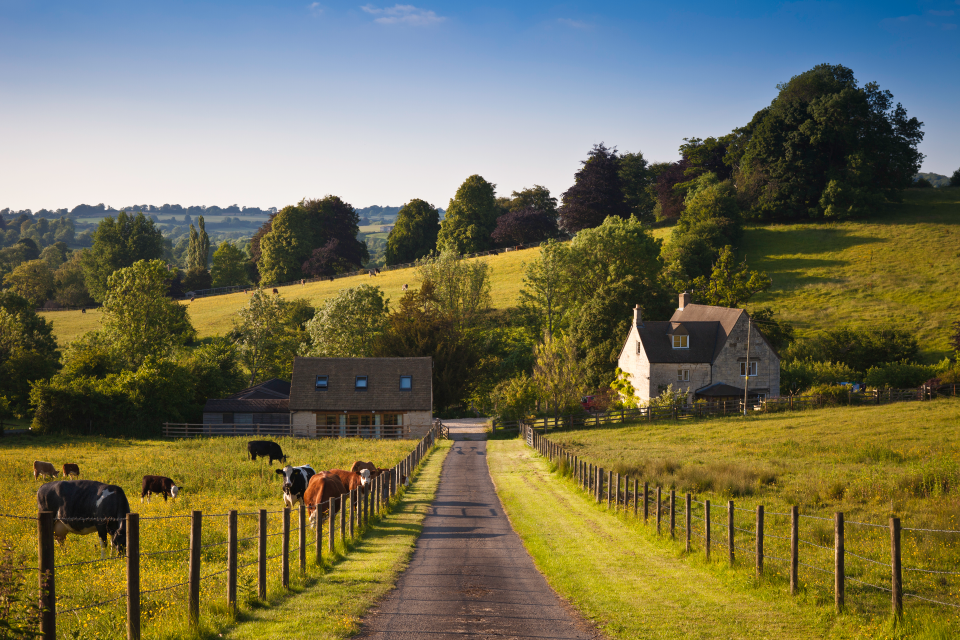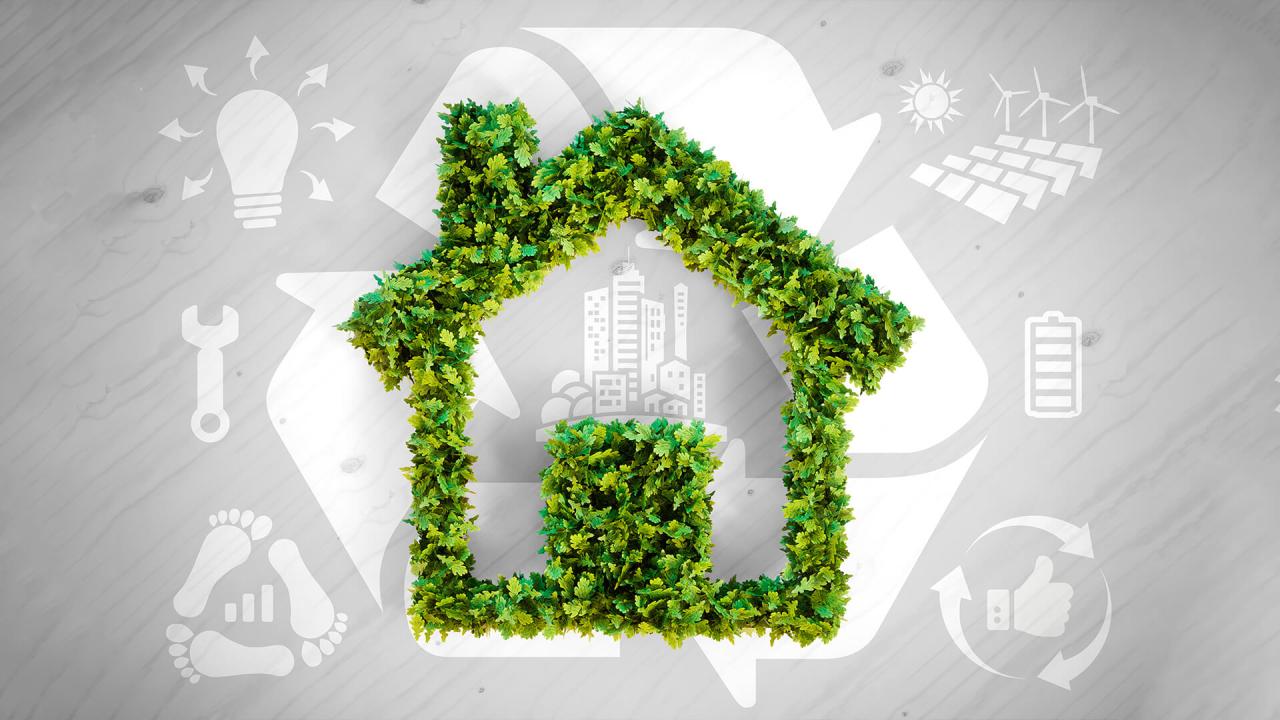The quiet expanses of rural land are no longer just pastoral backdrops; they’ve become dynamic hotbeds of investment, development, and evolving lifestyle aspirations. What was once seen as a stable, perhaps slow-growing, asset class is now experiencing an unprecedented surge in demand and value, driven by a powerful confluence of global shifts, technological advancements, and a renewed appreciation for nature and space. For investors, developers, farmers, and individuals seeking a change of pace, understanding the intricate forces behind this rise in rural land values is paramount. This comprehensive article delves into the core reasons why rural properties are more coveted than ever, exploring the key drivers, the diverse types of opportunities emerging, the strategic investment considerations, and the multifaceted impacts of this burgeoning trend on both individuals and the broader real estate ecosystem, including within Indonesia’s vast and diverse rural landscapes.
The Catalysts for Surging Rural Land Values

The remarkable increase in rural land values isn’t a singular phenomenon but rather a culmination of several interconnected societal, economic, and technological forces that have fundamentally reshaped how people perceive and utilize non-urban spaces.
A. Lifestyle Shifts and the Quest for Space
- Escape from Urban Density: The pandemic, coupled with increasing urban congestion and rising costs of living in cities, accelerated a widespread desire for more space, privacy, and a quieter environment. Rural land offers an ideal antidote to the intensity of urban life, providing room to breathe and spread out.
- Renewed Appreciation for Nature: There’s a growing global trend towards reconnecting with nature, outdoor activities, and self-sufficiency. Rural properties provide direct access to natural landscapes, opportunities for gardening, farming, or simply enjoying the tranquility, aligning with a heightened focus on well-being.
- Sustainable Living Aspirations: Many individuals and families are increasingly seeking self-sustainable living options, aiming to reduce their environmental footprint. Rural land offers the space and resources for organic farming, renewable energy installations (e.g., solar farms), and a more eco-conscious lifestyle.
- Desire for Greater Control and Security: In uncertain times, owning rural land can offer a sense of stability, control over one’s environment, and a perceived buffer against societal disruptions. This plays into a fundamental human desire for security.
B. Remote Work Revolution and Location Independence
- Work-From-Anywhere Capability: The widespread adoption of remote and hybrid work models has dramatically untethered professionals from urban offices. This newfound flexibility means many can now work effectively from virtually any location with reliable internet, including rural areas. This is a monumental shift, enabling individuals to pursue lifestyle preferences without sacrificing their careers.
- Geographic Arbitrage: Remote work enables individuals earning urban salaries to purchase significantly more affordable rural land or homes in non-urban areas. This “geographic arbitrage” maximizes their purchasing power, allowing them to acquire larger parcels of land or more substantial homes than would be possible in metropolitan areas.
- Improved Digital Infrastructure: Governments and private companies are increasingly investing in expanding high-speed internet (fiber optics, satellite internet) to rural areas. This improved connectivity is a critical enabler of remote work and makes rural living viable for a wider range of professionals.
- Extended Stays and Blended Living: The ability to combine work with leisure has led to the rise of extended stays in rural properties, blurring the lines between primary residences and vacation homes. This makes the investment in rural land more justifiable for multi-purpose use.
C. Investment Potential and Financial Benefits
- Strong Capital Appreciation: Historically, rural land has shown consistent, if sometimes slow, capital appreciation. However, current demand trends are accelerating this, leading to significant value growth, particularly in areas near developing infrastructure or emerging tourism.
- Diversification of Assets: For investors, rural land offers a tangible asset class that can diversify a portfolio beyond volatile stocks and urban real estate. It provides a hedge against inflation and a physical store of wealth.
- Income Generation Opportunities: Rural land can generate income through various means, including agriculture (farming, livestock), timber harvesting, mineral rights, renewable energy leases (solar or wind farms), and increasingly, short-term rentals (eco-tourism, glamping sites).
- Inflation Hedge: Like other real assets, rural land serves as an effective hedge against inflation. As the cost of living rises, the value of tangible assets, particularly those with inherent scarcity, tends to increase, protecting purchasing power.
- Limited Supply (Finite Resource): Land is a finite resource. As the global population grows and demand for space increases, the inherent scarcity of rural land ensures its long-term value appreciation, especially developable or uniquely situated parcels.
D. Agricultural and Resource Demands
- Food Security Concerns: Global concerns about food security and sustainable agriculture are driving renewed interest and investment in productive rural land for food production. This includes both large-scale commercial farming and smaller, artisanal operations.
- Renewable Energy Development: Vast expanses of rural land are ideal for large-scale solar farms and wind turbine installations. Energy companies are increasingly leasing or purchasing rural land for renewable energy projects, providing income streams for landowners.
- Timber and Mineral Resources: For land rich in natural resources, the value is tied to commodity prices for timber, minerals, and other raw materials.
Diverse Types of Rural Land Gaining Value

The surge in demand is affecting various categories of rural land, each with unique characteristics and investment considerations.
A. Agricultural Land
- Productive Farmland: Highly fertile land suitable for crops or livestock remains consistently valuable due to its fundamental role in food production. Value depends on soil quality, water access, and climate. In Indonesia, fertile rice paddies or plantations are highly prized.
- Ranch and Grazing Land: Expansive land suitable for livestock grazing, often in areas with specific climatic conditions and water sources.
- Vineyards and Orchards: Specialized agricultural land dedicated to viticulture or fruit orchards, often combining agricultural production with tourism (agritourism) or niche markets.
B. Recreational and Lifestyle Land
- Hunting and Fishing Land: Large tracts of land that offer opportunities for hunting, fishing, and wildlife observation, highly valued by outdoor enthusiasts.
- Forest and Timber Land: Land dominated by forests, valuable for timber harvesting, carbon sequestration, or simply for recreational use like hiking and camping.
- Waterfront (Lakes, Rivers, Oceanfront): Any rural land with significant waterfront access holds a premium due to its recreational appeal and scenic beauty.
- Mountain and Wilderness Retreats: Secluded parcels in mountainous or remote wilderness areas, sought after for privacy, adventure, and escape from urban life.
C. Development and Investment Land
- Transitional Land: Rural land located on the fringes of expanding suburban or urban areas, ripe for future residential or commercial development. These parcels often see the highest appreciation as cities grow outwards.
- Example: Land just outside Jakarta or Surabaya that is currently rural but eyed for future residential townships.
- Land for Renewable Energy Projects: Large, open, flat parcels with good sun exposure or consistent wind are highly valued by solar and wind energy developers for lease or purchase agreements.
- Short-Term Rental / Eco-Tourism Sites: Rural land with unique natural features (e.g., stunning views, waterfalls, unique geological formations) is being developed into glamping sites, eco-lodges, or unique vacation rentals, catering to the booming eco-tourism market.
- Raw Land for Speculation: Unimproved rural land purchased with the primary intent of holding it for future appreciation, often without immediate development plans. This strategy is higher risk but can yield significant returns if growth materializes.
Impacts and Implications of Soaring Rural Land Values
The rapid increase in rural land values has far-reaching implications for local communities, economic development, and environmental sustainability.
A. Economic and Social Impacts on Local Communities
- Increased Property Taxes: Rising land values can lead to higher property taxes, potentially burdening long-term residents and farmers, some of whom might be forced to sell.
- Affordability Challenges for Locals: Just as in urban areas, rising land values can make it difficult for local residents, especially younger generations or those with lower incomes, to afford to live and work in their own rural communities.
- Economic Diversification: New residents and investment can bring economic diversification to rural areas, creating jobs in services, retail, and hospitality, and fostering local entrepreneurship.
- Strain on Infrastructure: Increased population and development in rural areas can strain existing infrastructure, including roads, water supply, waste management, and internet services, requiring significant investment.
- Changing Community Character: The influx of new residents and the development of new businesses can alter the traditional character of rural communities, sometimes leading to cultural clashes or a loss of local identity.
B. Impacts on Agriculture and Land Use
- Farmland Conversion: Rising land values can incentivize farmers to sell their agricultural land for non-agricultural development (e.g., residential, commercial, industrial), leading to a loss of productive farmland and potential food security concerns.
- Pressure on Family Farms: Small and medium-sized family farms may find it increasingly difficult to compete with developers or large agricultural corporations for land, potentially leading to consolidation in the agricultural sector.
- Sustainable Farming Practices: Increased awareness and demand for local food can encourage investment in sustainable and organic farming practices on rural land, benefiting both the environment and local economies.
C. Environmental and Conservation Impacts
- Habitat Loss and Fragmentation: Uncontrolled rural development can lead to the destruction and fragmentation of natural habitats, impacting biodiversity and ecosystem health.
- Increased Carbon Footprint: Sprawling rural development often leads to longer commutes and increased reliance on personal vehicles, contributing to higher carbon emissions.
- Water Quality and Resource Strain: Increased population density and agricultural activities in rural areas can put pressure on water resources and lead to pollution of local waterways if not properly managed.
- Conservation Opportunities: Rising awareness and land values can also create opportunities for land conservation efforts, as conservation easements or public acquisitions become more viable ways to protect natural spaces.
Strategic Considerations for Investing in Rural Land
Investing in rural land requires a distinct set of considerations compared to urban property, demanding thorough due diligence and a long-term vision.
A. Thorough Due Diligence
- Research Zoning and Land Use Regulations: Understand the specific zoning of the rural land (e.g., agricultural, residential, commercial, conservation) and what activities or developments are permitted. Zoning changes can significantly impact value.
- Assess Access and Easements: Verify legal access to the property. Are there existing easements (e.g., utility easements, road easements) that might limit use or development? Understand your rights and responsibilities.
- Investigate Water Rights and Availability: Water is paramount in rural areas. Understand the property’s water source (well, municipal, surface water rights), water quality, and any regulations concerning water usage.
- Evaluate Soil Quality and Topography: For agricultural land, soil reports are essential. For any land, understanding topography (slopes, drainage) impacts development costs and potential uses.
- Check Environmental Factors: Research potential environmental hazards (e.g., flood zones, wetlands, protected habitats, contamination) that could restrict development or incur significant remediation costs. In Indonesia, be aware of specific environmental regulations for agricultural land conversion.
- Verify Utilities and Infrastructure: Determine the availability and cost of connecting to essential utilities (electricity, water, internet, sewage). In remote rural areas, these can be significant expenses.
B. Financial Analysis and Valuation
- Comparative Market Analysis: Research recent sales of similar rural land in the area, considering factors like size, location, access, and unique features.
- Income Potential Assessment: If considering income-generating rural land (e.g., agriculture, timber, renewable energy leases), thoroughly project potential income streams and associated operating costs.
- Development Potential Valuation: If buying for future development, assess the land’s highest and best use, considering zoning, infrastructure availability, and market demand for future projects.
- Long-Term Tax Implications: Understand property taxes, capital gains taxes, and any specific rural land taxes or agricultural tax breaks that might apply.
- Financing Options: Rural land financing can differ from residential mortgages. Explore specialized lenders that cater to agricultural or undeveloped land, or consider owner financing.
C. Leveraging Local Expertise
- Work with a Specialized Real Estate Agent: Seek an agent who has specific expertise in rural land transactions in your target area. They understand the nuances of land zoning, water rights, and local market trends.
- Consult with Local Professionals: Engage local surveyors, environmental consultants, soil scientists, and land use attorneys. Their local knowledge is invaluable.
- Connect with Local Community: Talk to long-term residents, farmers, and local government officials to gain insights into the community, development plans, and potential challenges.
D. Strategic Acquisition and Management
- Patience and Due Diligence: Rural land transactions can be complex and require patience. Do not rush the due diligence process.
- Clear Exit Strategy: Before buying, have a clear idea of your long-term goals for the rural land. Will you hold it for appreciation, develop it, operate a business on it, or eventually sell it?
- Proactive Management: Whether it’s managing agricultural operations, timber harvesting, or simply maintaining boundaries and preventing encroachment, rural land often requires active management to protect its value.
- Consider Conservation Easements: If you wish to preserve the natural character of your land while potentially gaining tax benefits, explore conservation easements.
The Future Outlook for Rural Land Values
The future of rural land values appears strong, driven by enduring trends and evolving needs.
A. Continued Demand for Space and Lifestyle
- Permanent Shift in Work Models: Remote and hybrid work are likely to remain prevalent, continually fueling demand for rural land as people seek more flexible and spacious living environments.
- Wellness and Self-Sufficiency Trends: The emphasis on health, well-being, and a desire for greater self-sufficiency will continue to drive interest in rural properties for personal retreats, hobby farms, and sustainable living.
B. Sustainability and Resource Value
- Carbon Sequestration and Environmental Services: The value of rural land for carbon sequestration (through forestry) and other environmental services (e.g., water purification, biodiversity conservation) will likely increase, opening up new income streams.
- Renewable Energy Expansion: The global push for renewable energy will continue to drive demand and value for rural land suitable for solar, wind, and potentially other green energy installations.
- Sustainable Agriculture: Investment in and demand for sustainably managed agricultural land will grow as food security and environmentally responsible practices become more critical.
C. Technological Advancements
- Improved Rural Connectivity: Ongoing investment in high-speed internet infrastructure in rural areas will further enhance their viability for remote work and digital enterprises, making them more attractive.
- Precision Agriculture Technology: Technology like drones, IoT sensors, and AI will enable more efficient and productive use of agricultural land, maximizing yields and profitability.
- Remote Monitoring and Management: Tools for remotely monitoring rural properties (e.g., security, environmental conditions, resource levels) will become more sophisticated, simplifying management for absentee owners.
Conclusion
The surge in rural land values represents a profound and enduring shift in the real estate landscape, driven by a powerful confluence of lifestyle aspirations, the remote work revolution, and compelling investment opportunities. From productive farmlands and recreational retreats to strategic development sites for renewable energy, the diverse potential of rural properties is increasingly recognized. While careful due diligence, local expertise, and a long-term perspective are crucial for successful investment, the overarching trend points towards continued appreciation and a growing role for rural land in global economic and environmental strategies. For those looking to escape the urban grind, secure a tangible asset, or capitalize on burgeoning industries, the quiet appeal of rural land is proving to be a loud and clear investment signal, promising both financial returns and a pathway to a more spacious, sustainable, and connected future, especially across the vast archipelago of Indonesia.













